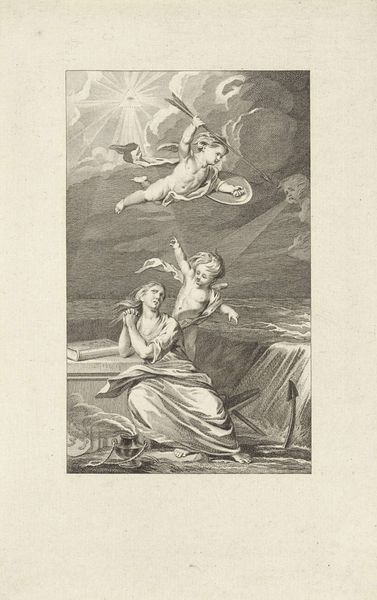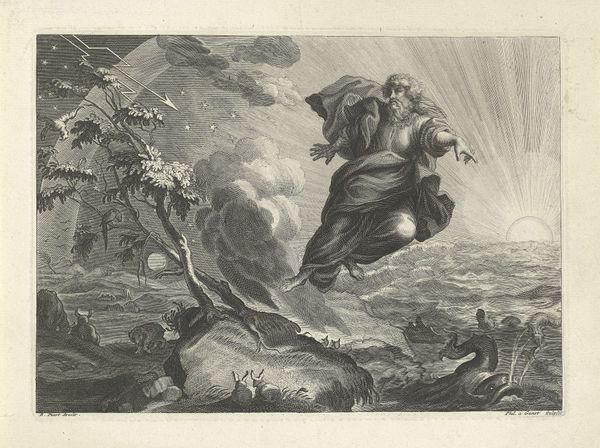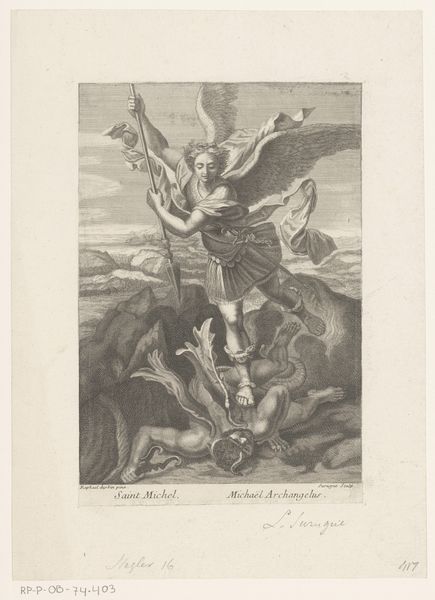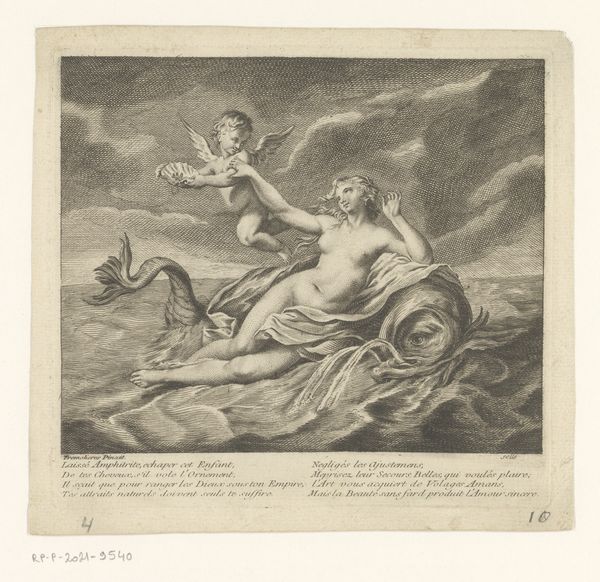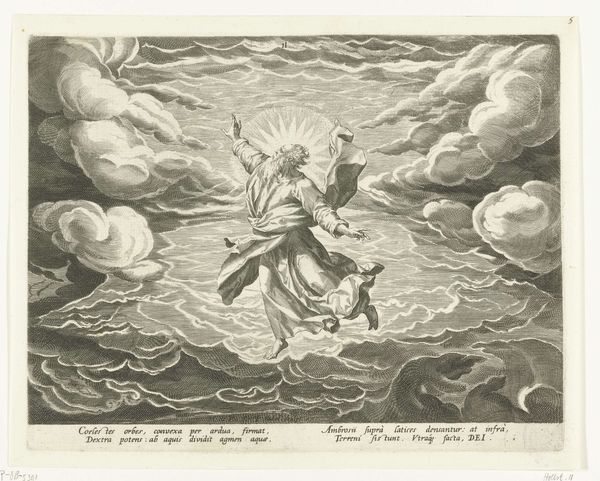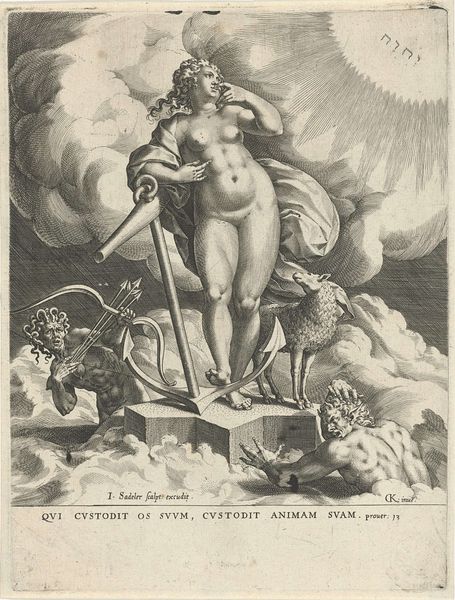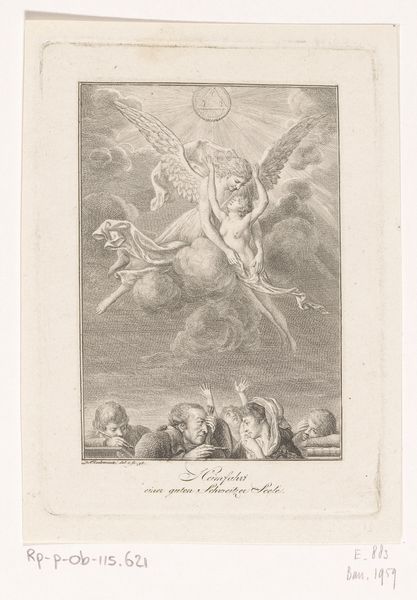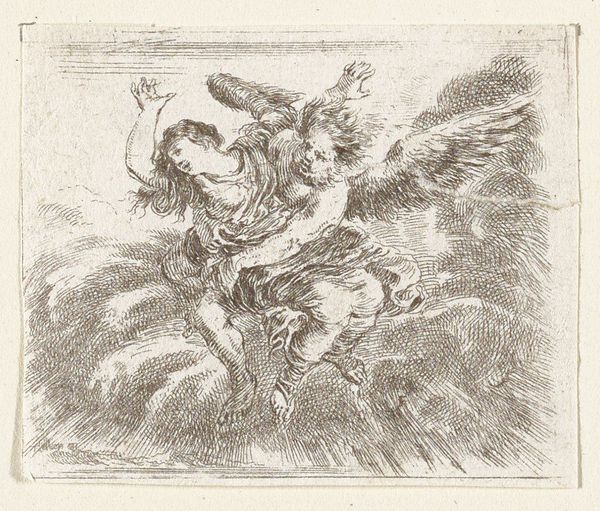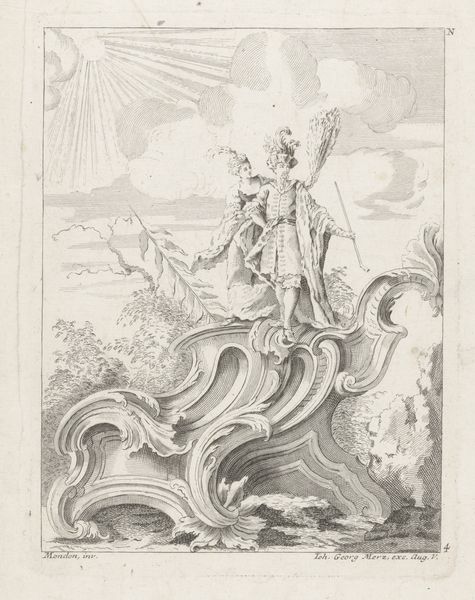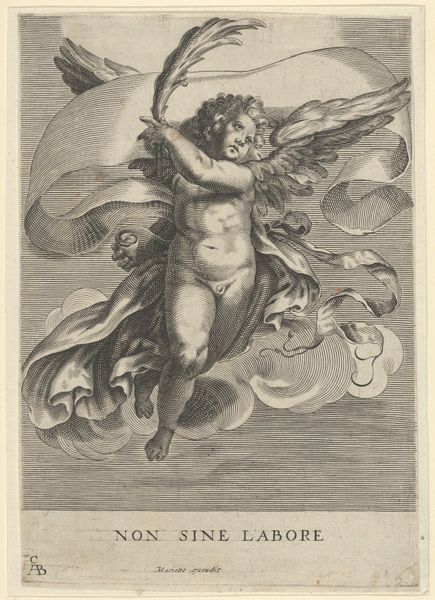
Copyright: Public domain
Curator: Looking at "Rusalkas", created around 1857 by Taras Shevchenko, I’m immediately struck by its ethereal quality. The way the figures seem to emerge from the sepia tones, it feels both haunting and dreamlike. Editor: It's true, the initial impression is one of otherworldliness. The figures appear to float rather than swim, their forms blending seamlessly with the water and sky. Are they rising or falling, I wonder? Curator: These are Rusalkas, water spirits in Slavic mythology, often the souls of young women who died by drowning. Shevchenko depicts them as both alluring and melancholic. Note how he employs ink and paper, achieving incredibly subtle gradations to give the forms substance and ethereality at once. Editor: Given the socio-political climate in mid-19th century Ukraine, where Shevchenko was deeply involved in nationalistic movements, one has to ask what these water spirits meant within the wider cultural discourse? Were these figures simply a depiction of mythology or did they carry an allegorical weight? Curator: I believe they possess a duality. On one level, they draw upon deep-seated cultural memory surrounding the Rusalkas – symbols of longing and the dangers of the water. But considering Shevchenko’s political leanings, these feminine, semi-transparent bodies might have been representing an oppressed Ukrainian spirit longing for freedom, trapped between worlds, and in danger. Editor: That brings an intriguing dimension to this work, aligning it with romantic notions of freedom that circulated at the time. Shevchenko was, after all, actively involved in movements advocating for the liberation of Ukraine. It casts his choice of subject and style under a whole new light. Curator: And his style reflects the mood perfectly! The way he manipulates the ink to create this dreamlike quality adds to the mystery, it resonates deeply with archetypes. Editor: Indeed. Considering the social unrest, these figures in this medium embody something more potent than just the supernatural, more like a melancholic dream about national identity and suppressed longing for freedom. Curator: Understanding the symbolism embedded in Ukrainian culture enhances our perception of the artist’s cultural narrative and deep connection with his nation. Editor: It also speaks to the way visual culture shapes identity through encoding certain histories, desires and perhaps repressed anxieties, as much now as then.
Comments
No comments
Be the first to comment and join the conversation on the ultimate creative platform.
